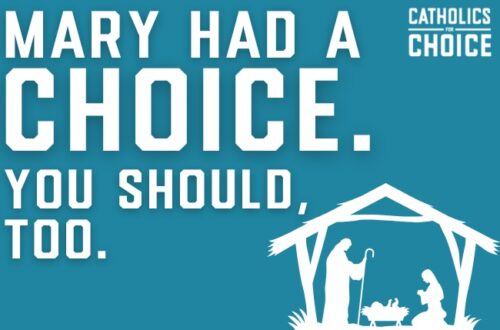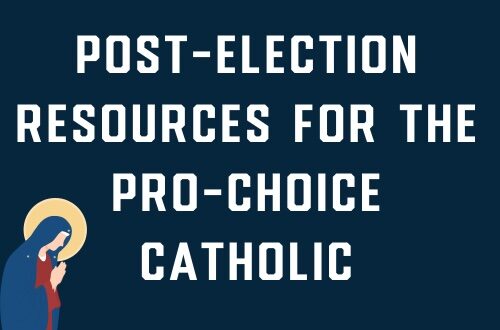The Truth Behind the Numbers
You would not know it from reading the headlines or listening to political leaders, but public support for abortion is as high as it has been in two decades. There exist fundamental misunderstandings of abortion attitudes among political thought leaders, whose scapegoating of abortion is completely misguided.
According to the Pew Research Forum, 57 percent of the public say abortion should be legal in “all” (25%) or “most” cases (33%), while fewer than four in 10 individuals (39%) say it should be illegal in “all” (16%) or “most” cases (24%). Since 1995, the trend data on this traditional benchmark of abortion attitudes show a majority of the public has agreed abortion should be legal in “all” or “most” cases, with the exception of two dips below a majority in 2009 (47%) and 2010 (50%).

Today, support for abortion garners majorities across demographic groups. In particular, segments of the population you would think the Democratic Party would like to (or needs to) reach and activate all support abortion care:

There is a political divide on abortion support when one looks at party identification. Three-quarters (75%) of Democrats and six in 10 (60%) Independents say abortion should be legal in “all” or “most” cases, whereas 65 percent of Republicans say abortion should be illegal in “all” or “most” cases. Nonetheless, among self-identified moderate Republicans more than half (54%) support legal abortion.
For years, the media has reported that attitudes on abortion are highly contentious and divisive. In an attempt to be “balanced,” the most extreme views on abortion are frequently highlighted, creating the impression of greater division and conflict than exists in reality. While there is a small portion who very strongly disagrees with the legality of abortion, 57 percent to 39 percent is not a divided public—it is one supportive of abortion rights. Even when one looks at the opinions of core abortion supporters versus core anti-abortion respondents, those who believe abortion should be “legal in all” cases outnumber those who say abortion should be “illegal in all” cases (25% to 16%).
Where do these data leave the Democratic Party in 2017? First, take a look back. The Democratic Party generally supported a woman’s right to an abortion from 1980 until 2006, when it decided to broaden its appeal by running an unprecedented number of antiabortion rights candidates in socially conservative swing districts. That move helped secure a solid House majority for the Democrats, and it became clear during the healthcare debate that abortion-rights supporters would find their cause brushed aside in pursuit of other priorities. Antiabortion Democrats pressed for stringent abortion restrictions and succeeded.
In 2016, the Democratic Party changed gears and signaled that it would stand firm on upholding the right to abortion care. In particular, due to the work of women activists of color in the Reproductive Justice movement, the Party put a spotlight on one of the most heinous restrictions on abortion —the Hyde Amendment. After the Democrats’ significant losses in that year’s elections, many quickly looked for something to blame, and a woman’s right to abortion became the lightening rod. Just as in 2006, some in the Party have begun calling for a return to a “big-tent” strategy.
But did anyone in the Democratic Party look at the numbers, particularly those for Democratic women, young people and women of color?
A look at the polling in 2016, reported by Pew, finds an increase in support for abortion. Put simply, abortion did not lose Hillary Clinton the election. Support for abortion access is as high as it has been in two decades, and that support increased in 2016. If the issues that drove voters are isolated (leaving aside obstacles to voting, such as lack of voting rights protection, the impact of felony disenfranchisement and so on), the data1 clearly show that a person’s race and attitudes toward race were key factors deciding voter preference. As Thomas Wood, a professor at Ohio State University stated in the Washington Post, “Since 1988, we’ve never seen such a clear correspondence between vote choice and racial perceptions.”
ConwayStrategic’s analysis of the American National Election Studies data looked at seven different groups of attitudes related to: the economy, race, immigration, gender/sexuality, abortion, religion, and Muslims and terrorism.
When attitudes on abortion are considered alongside people’s views on race, immigration and the economy, nowhere did abortion drive voter preference. Rather, views on other issues were much more important in determining who a voter chose in the election.
The following issues/attitudes were predictive of someone voting for Trump in 2016:
- Agree with the statement: “Blacks should work their way up without special favors” (81% Trump voter vs. 33% Clinton)
- Favor building a wall between the U.S. and Mexico (67% Trump vs. 8% Clinton)
- Oppose allowing Syrian refugees into the country (81% Trump vs. 24% Clinton)
- Agree with the statement that businesses should be allowed to refuse service to gay individuals (76% Trump vs. 31% Clinton)
- Believe the current economy is bad (66% Trump vs. 22% Clinton)
- Believe President Obama is a Muslim (48% Trump vs. 7% Clinton)
- Hold negative feelings towards Muslims (mean of 43 vs. 67 on a 100-point-scale feeling thermometer)
Clinton voters are more likely to:
- Believe the economy is on the right track (51% Clinton vs. 4% Trump)
- Express positive feelings toward Muslims (66% Clinton vs. 43% Trump)
Even when white evangelical voters are examined in isolation, their attitudes on abortion are not predictive of their voting selection. Stronger predictors include income, party ideology, church attendance, and whether they favor building a wall between the United States and Mexico.
Among Latino voters who supported Trump (23% of Latino voters) abortion was similarly not predictive of their vote. Rather, in line with voters overall, political ideology, views on the country and the economy going in the wrong direction, opposition to affirmative action, support for a wall between Mexico and the United States, a belief that minorities need to adapt to US customs, opposition to marriage equality and belief that Obama is a Muslim drove the Latino vote for Trump.
One can hear the argument now—but Democrats need to win the swing districts in 2018. Before anyone concedes that even in tough swing districts the Democrats should throw women and their reproductive rights under the bus—again—I want to raise some questions to consider in search of a deeper understanding of where the public stands on abortion.
Abortion attitudes are multidimensional and pollsters generally do not do such a great job of measuring them. First, this piece has highlighted support for legal abortion and shown what has become known as the traditional four-way question: “Do you think abortion should be legal in all cases, legal in most cases, illegal in most cases or illegal in all cases?” Abortion is legal and an established right in the United States, so why keep asking people if it should be legal? Pollsters do not do this to such an extent when it comes to other social issues, such as marriage equality or gun control.
Second, research shows that what people do in their own lives when faced with an actual situation, or how they support a friend or family member, does not always track with how they answer questions of legality. In fact, large majorities would support someone who was having an abortion and would like to see abortion care be affordable, in her community and with adequate support for the woman. The typical measures on the legality of abortion are at best insufficient and at worst may be inaccurate and misleading. For example, a Vox study shows that among those who believe abortion should be illegal except in rare cases, more than half (53%) do not want to overturn a woman’s constitutional right to abortion, 45 percent believe the recent restrictions on abortion are going in the wrong direction, and 71 percent would support a friend or family member who decided to have an abortion. These responses highlight the multidimensional nature of abortion attitudes and the inadequacies of relying on the traditional four-way question as a benchmark of public attitudes.
What next? The conventional wisdom that abortion is always a polarizing issue needs to be challenged and there needs to be a determined effort to stop pushing people to fit neatly into boxes. This narrative needs to be broken. Media, pollsters and political leaders must stop perpetuating the sense that the public is divided on abortion when they are not. Those with influence must stop blaming and scapegoating different segments of the public, and instead—based on actual data—do the real work of upholding the fundamental values of reproductive health, rights and justice.




